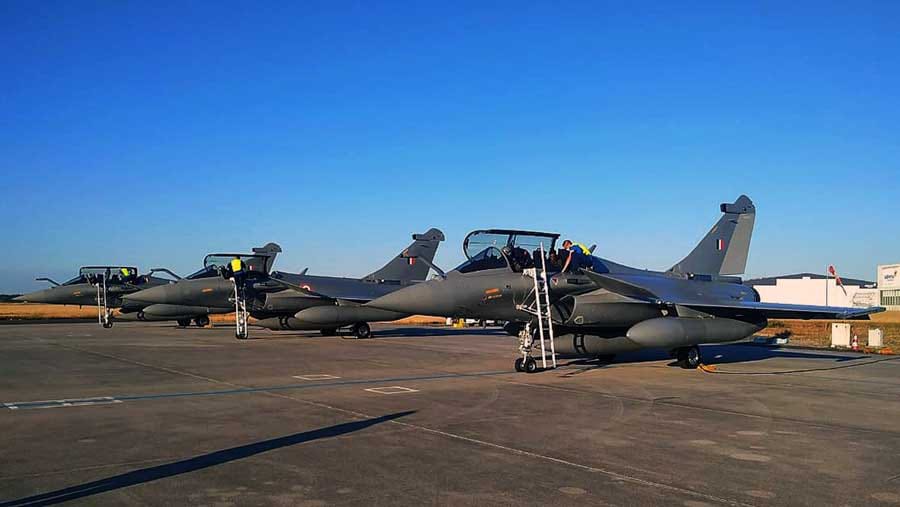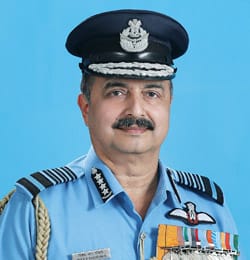The Urgency of the MRFA Initiative to Bolster India’s Air Force. The Multi-Role Fighter Aircraft (MRFA) program, which aims to procure 114 fighter jets for the Indian Air Force (IAF), is a pivotal project facing significant scrutiny and debate within the industry.
Facing a critical shortage of combat aircraft and declining squadron levels, the IAF urgently needs the MRFA program resolved. Despite facing delays and bureaucratic obstacles, the IAF remains hopeful for a breakthrough and is advocating for expedited approval of the MRFA deal.
Strategic Importance of the MRFA Initiative
The MRFA program is essential for the IAF’s modernization and long-term strategic goals. Currently, the IAF’s squadron strength is below the sanctioned levels, and the introduction of new combat aircraft is crucial to meet operational requirements. The MRFA initiative is crucial for quickly enhancing the IAF’s combat strength.

The Indian government is looking into various alternatives for the MRFA program, such as G2G agreements and acquisitions from specific Original Equipment Manufacturers (OEMs).
Efforts are being made to streamline the procurement process, incentivize private sector participation, and ensure cost-efficiency, lifecycle support, and best value for money in the MRFA tender.
The MRFA program is also intricately linked with the Advanced Medium Combat Aircraft (AMCA) program. The recent clearance for the AMCA program has reignited discussions about the fate of the MRFA tender. The IAF seeks a solution that addresses its immediate needs through the MRFA program while also aligning with its long-term ambitions via the AMCA program.
Navigating Complexities and Potential Partnerships
In January, Defence Minister Rajnath Singh led a high-level delegation to the UK, with one agenda point reportedly being a possible partnership in the Tempest project. This sixth-generation fighter design and development program involves collaboration between the UK, Italy, and Japan, aiming for a 2035 launch. While the outcome of discussions on Indian participation remains undisclosed, its inclusion highlights India’s interest in advanced defense partnerships.

Meanwhile, the SAAB Gripen is vying for success in the MRFA deal with its upgraded Gripen E model. The Indian defense market is abuzz with anticipation for the tender, which aims to address the IAF’s rapidly declining fighter jet squadron strength. The MRFA deal continues the effort initiated by the previously scrapped Medium Multi-Role Combat Aircraft (MMRCA) program, which was abandoned in 2015 after 15 years of deliberation, resulting in the purchase of 36 Rafale jets directly from France.
The Rafale, despite being a highly capable omni-role fighter, struggled to secure international buyers. Apart from small orders from Egypt and Qatar, the Rafale faced rejections from Belgium, Brazil, Canada, Finland, Kuwait, Singapore, and Switzerland, primarily due to its high cost.
The Indian branch of the Swedish company SAAB, which manufactures the single-engine Gripen fighter jets, has actively pursued the MRFA opportunity since the IAF expressed interest in importing 114 fighter jets. Recently, SAAB publicly offered its upgraded Gripen E platform to the IAF, highlighting the aircraft’s next-generation capabilities and readiness to face any threat.
However, the MRFA process has seen delays since the IAF floated the Request for Information (RFI) in 2018, receiving enthusiastic responses from global aircraft manufacturers for the multi-billion-dollar deal.
The formulation of the Air Staff Qualitative Requirements (ASQR) has been a critical stage in the procurement process, as it determines the quality, price, and competition. In the past, the ASQR setting for the MMRCA deal was criticized by the Indian Comptroller and Auditor General (CAG) for being overly technical, leading to challenges in meeting the requirements.

Air Marshal (retd) M. Matheswaran, former Deputy Chief of Integrated Defense Staff and a key figure in the MMRCA deal, emphasized the importance of the ‘Make in India’ initiative as a potential deciding factor for the MRFA program. He highlighted the thorough vetting process of the MMRCA competition and expressed optimism that the MRFA deal, despite being a rebranded version of the MMRCA, could benefit from lessons learned.
Conclusion
The MRFA program is crucial for the IAF’s modernization and addressing its immediate shortage of combat aircraft. The Indian government is actively working towards resolving the program’s challenges and exploring alternative solutions. The connection between the MRFA and AMCA programs aims to offer a comprehensive strategy for the IAF’s fighter fleet needs, addressing both immediate and long-term strategic objectives.
Also read:



